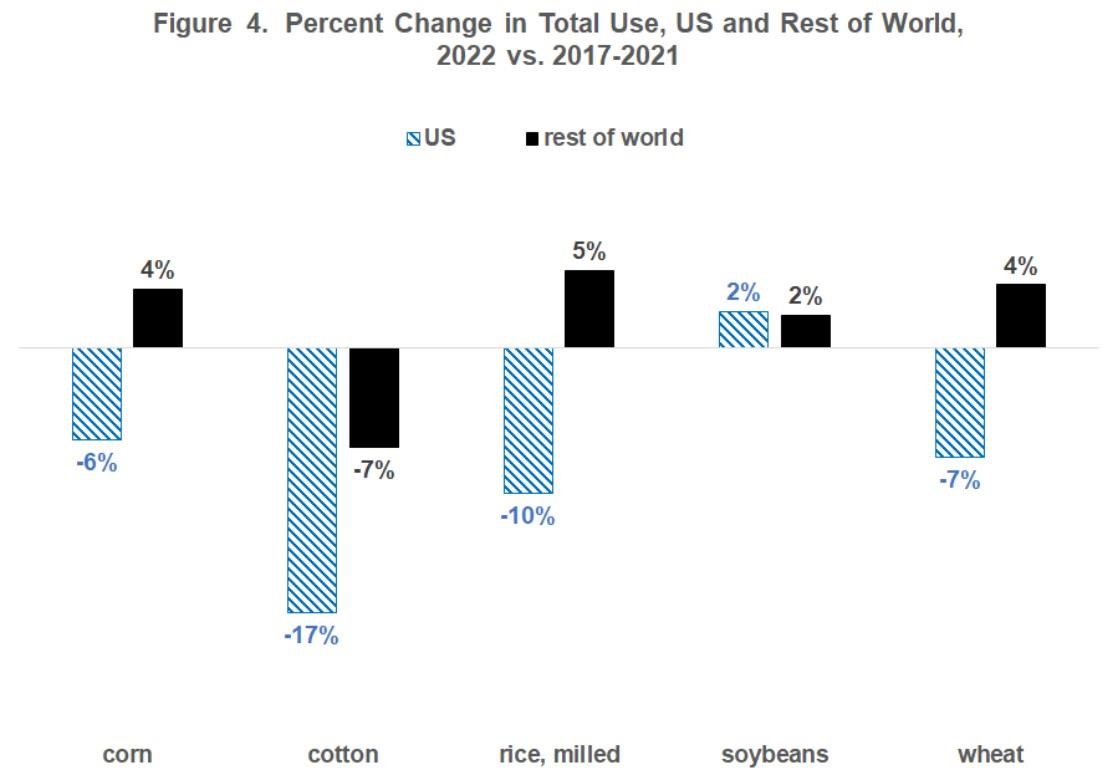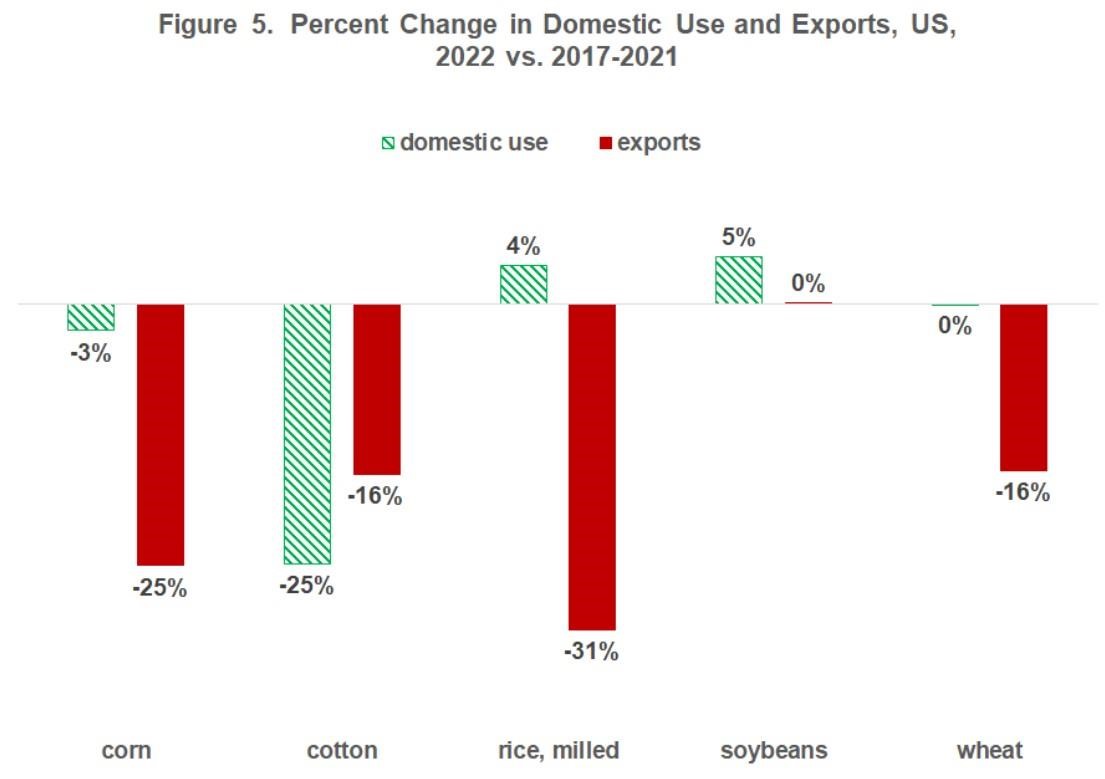After collecting the sample, mail or deliver sample to the Lab. Forms and submission information can be found at the Soil Fertility Submission Forms site. Now we wait. Delivery and processing take time, so remember to send you samples before you need them. Receiving the results as an email, versus waiting for them to be mailed back to you can speed up the process.
There is no "uniform" soil analysis report; meaning results and analysis can be different depending on the provider. In this article we are going to break down the soil test reports from the Penn State Agricultural Analytical Services Laboratory (Images 1 and 2). In images 1 and 2, the soil tests are broken into four sections.

Image 1. Soil test report broken into four sections with recommendations for corn grain, corn silage, and planting alfalfa-grass.

Image 2. Soil test report broken into four sections with recommendations for planting tall fescue, planting orchardgrass, and renovating pasture with legumes.
The first section is composed of the information you filled out when you sent in the soil sample and forms -- name, contact, and field information.
In the second section, we start to get into the measured soil fertility levels- pH, phosphorus (P), potassium (K), and magnesium (Mg). Phosphorus, potassium, and magnesium are essential plant nutrients that are measured in parts per million (ppm). As mentioned, all labs and analysis reports are different, so if looking at a different lab or analysis tests, it is not measured in pounds per acre (lbs/acre). Soil pH measures the acidity or alkalinity and pH levels will range from 0-14, with <7 indicating an acidic pH, 7 a neutral pH, and >7 a basic pH. The pH scale is based on a logarithmic scale, meaning the difference from a pH of 6.2 to 6.3 is 1.3x difference in acidity. soil.
In section 2 of figures 1 and 2, you'll find levels of pH, P, K, and Mg represented by a numerical value and a bar chart describing the levels as below optimum, optimum, and above optimum. The measured soil fertility values are nothing without research on how crops respond under varying soil fertility conditions. A lot of research has gone into determining what numerical values mean in terms of crop response (Image 3). Image 3 shows an example of soil test calibrations where different crops were tested in soils with different amended fertility levels for each factor measured (pH, P, K, Mg). As you can see, crop response at a certain point will start to level off and enter an optimum zone, where no additional nutrient amendments will affect crop production. Above the optimum, could be a point of concern when it comes to some nutrients like phosphorus. Where phosphorus levels are greater than crop utilization there is potential for pollution and water quality concerns. Below the optimum, the crop will respond to additional nutrient supply that can have a positive impact growth and production.

Image 3. Soil test calibrations, created by Doug Beegle (dbb@psu.edu), Emeritus distinguished Professor of Agronomy.
You may notice that nitrogen (N) is not measured. Although nitrogen is a macro plant essential nutrient, required in larger quantities, and is often the limiting factor in plant growth, it is very difficult to measure in the field. Nitrogen is a very dynamic nutrient, moving very quickly in the environment from one form to another. Because N is so difficult to measure and moves through the environment in so many ways, N is recommended based on crop needs. More on nitrogen in section 3.
In section 3 of the soil test report, the recommendations are reported. The upper portion of section 3 is used for the recommendations of limestone and magnesium. Limestone is reported as pounds per acre required to get to a target pH of 6.5 and reducing soil acidity. It is also indicated that lime recommendations are based on the liming material being 100 on the calcium carbonate equivalency (CCE) scale. Calcium carbonate equivalency means that it neutralizes with the same value as pure calcium carbonate. This is becoming more important with the variety of liming products becoming available as some are higher, and other are lower, than 100, leading to an adjusted application rate. This section also has magnesium recommendations because magnesium deficiencies are usually remedied with a dolomitic lime application, treating soil pH and Mg simultaneously. More information on calcium carbonate equivalency and liming can be found at the Penn State Extension article Soil Acidity and Aglime.
Moving down through section three, you will next find recommendations for plant nutrient needs. In this section you will see the cropping year, the crop, expected crop yield, crop nutrient needs, and laboratory notes.
Recommendations from the lab are based on the crop you are growing and the year of rotation. If you are producing a grass crop, the recommendations for nitrogen will be higher that the recommendations on a legume crop. Likewise, the nutrient recommendations will be higher in a crop that is being mechanically harvested, like corn silage, when compared to pasture. At their essences, recommendations are designed to keep nutrients from being the limiting resource to the crop, while maintaining economic and environmental balance. When all nutrients are in the optimum range, recommendations are based on crop removal, meaning recommendations are to replace the nutrients removed by the harvested crop. When nutrients are below optimum, recommendations are based on a building approach, meaning the recommendations are designed to get the soil nutrients to the optimum range over the three years of the soil test.
As mentioned previously, nitrogen is based on average crop uptake and expected yield, rather than an analytical soil test. Opposite of nitrogen are phosphate and potash which are both recommended from soil measurements and are recommended in the forms of P2O5 and K2O, respectively. It is important that you recognize how your recommendations and nutrient levels are reported.
Below the recommendation are the laboratory notes. Often in this section you will find information about split applications of nitrogen, recommendations on applications timing, animal health issues, etc. The laboratory note section can provide valuable insights and tips into proper applications and nutrient timing.
The last section to discuss is the bottom section, or section 4. Section 4 contains many of the analytical results or other tests that can be purchased at an additional fee. A few keys to notice in section 4 are as follows: Acidity is not the same a soil pH, these are very different things. As we see in Image 2. The soil pH is 5.2 and the soil acidity is 8.7. If you have purchase additional test options, such as organic material, nitrate-N, or salts, results will be found in the sections. Also, trace mineral concentrations for zinc, copper, and sulfur are found in this section. Although recommendations are not provided for trace minerals, a normal range table can be found on the back of your soil test result.
Source : psu.edu